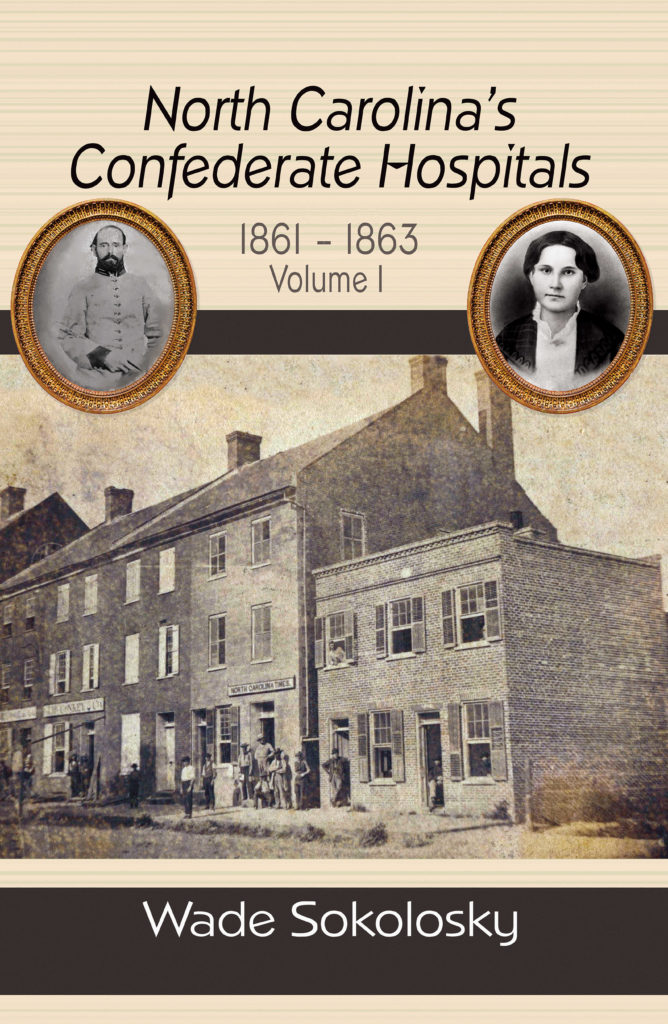North Carolina’s Confederate Hospitals, 1861-1863, Volume I

The Old North State’s Confederate hospitals receive scant attention from most historians. Wade Sokolosky rectifies this oversight with North Carolina’s Confederate Hospitals, Vol. I, 1861-1863. Sokolosky now offers the first definitive study of this forgotten history, revealing the key players and how losses from disease, sickness, and the early military operations in both North Carolina and Virginia generated the requirement for military hospitals.
In chronological order, beginning in April 1861, the author discusses how the density of troop populations in certain regions of the state, and an ever-increasing number of sick and wounded, eventually transformed the state by December 1863 into a major hospital center for sick and wounded from the Confederate General Robert E. Lee’s Army of Northern Virginia.
In volume one of North Carolina’s Confederate Hospitals, Wade Sokolosky exposes the Confederate government’s total unpreparedness for the drawn-out war that transpired, and how it failed to provide adequate care for thousands of sick and wounded. It was in the war’s early years that individual states and private organizations, independent of the fledgling Confederate Medical Department, provided the necessary support to their native sons.
Sokolosky also presents an in-depth portrait of the friction that existed between the Confederate and North Carolina medical departments, as well as, describing the diverse makeup of North Carolina’s hospital personnel, which as the war dragged on, became progressively dependent upon Confederate women, and even more so, African Americans, both enslaved and free, who carried out the day-to-day operations of these institutions. North Carolina’s Confederate Hospitals is the result of years of careful research in a wide variety of archival sources and relies upon individual service records, official reports, diaries, newspapers, and letter collections, all tied to a keen understanding of both military operations and the emerging significance of the railroad. Sokolosky, a career army officer, has used his expertise in military affairs to produce what surely must be the definitive study of one of North Carolina Civil War’s history overlooked yet significant contributions to the war effort. Outstanding original maps by George Skoch coupled with period photographs reinforce the quality of this account and the authors’ commitment to excellence. Readers with an interest in Civil War hospitals, North Carolina history, or the Civil War, in general, will enjoy this book.